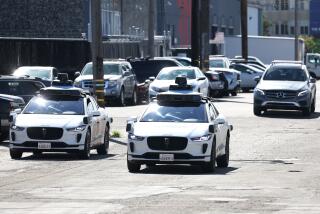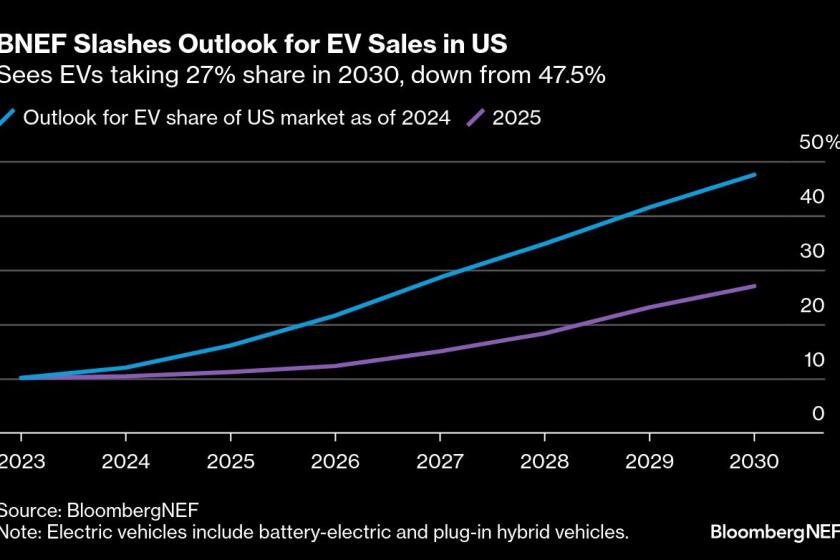NHTSA reviewing new Toyota Corolla unintended-acceleration claims
- Share via
Federal safety regulators are looking into complaints that Toyota Corollas can surge unexpectedly even when a driver is pressing the brake pedal.
The National Highway Traffic Safety Administration said it is examining 163 complaints from drivers of the small car to determine whether there is a problem that warrants the opening of a formal safety investigation.
The agency said it is responding to a petition for an investigation from Kathy Ruginis of Bristol, R.I., who claimed her Corolla surged forward into a Jeep even though she was braking as she parked the Toyota. Safety Research & Strategies Inc., a Rehoboth, Mass., consulting firm that frequently prepares testimony in auto-defect litigation, said information from the Corolla’s event-data recorder backs up the woman’s claim.
NHTSA said it will look to see if there is an unintended acceleration problem in as many as 1.7 million Corollas from the 2006 through 2010 model years.
Toyota said in a statement that “it will cooperate fully with any inquiry.”
The automaker has faced previous probes into problems with unintended acceleration. They started after a horrific 2009 crash of a Toyota-built Lexus outside San Diego that took the life of an off-duty California Highway Patrol officer and his family. That crash was thought to have been caused by floor mats jamming the gas pedal.
Toyota subsequently recalled millions of vehicles to replace floor mats and fix a mechanical problem that might have caused gas pedals to get stuck on their own.
Earlier this year, Toyota admitted deceiving regulators and consumers about the two defects linked to unintended sudden acceleration and agreed to pay $1.2 billion, the largest penalty ever imposed on an automaker. The deal settled a four-year federal criminal investigation into whether Toyota properly reported safety complaints about sudden acceleration.
Toyota was formally charged with one count of wire fraud, but the Justice Department will dismiss the charge after three years if the automaker abides by the settlement terms.
As part of the agreement the Justice Department appointed David Kelley, a former U.S. attorney, to serve as the independent safety monitor at U.S. operations of Toyota Motor Corp.
Ruginis and her husband, Bob, have met with Kelley’s staff to discuss their Corolla’s crash, said Sean Kane, the president of Safety Research & Strategies, the firm that reviewed the collision data.
“The Toyota monitor has an obligation to address safety and whether Toyota is accurately addressing it,” Kane said.
Toyota examined the car, gave it a test drive and reviewed the information from the event-data recorder and decided there was nothing wrong with the vehicle.
Ruginis had previously had the Corolla repaired for both the floor-mat and gas-pedal recalls but reported the vehicle still had a history of “briefly surging.” She said it happened two to four times a month.
In the five seconds before the June 8 crash into the Jeep, the data recorder in the Corolla indicated that the accelerator pedal was untouched, the brake pedal was depressed and the speed of the car and engine power increased, Kane said. He said that was evidence of unintended acceleration.
“When we look at this data we see that this problem has not gone away,” Kane said.
However, Toyota said information from the data recorder shows that Ruginis was not braking until just a fraction of a second prior to the collision.
Last year, an Oklahoma City jury found that faulty electronic systems caused a Camry sedan to suddenly accelerate and crash, killing one woman and injuring another.
Toyota, however, has maintained that there was no electronic flaw that might cause its cars to accelerate unexpectedly.
A 10-month investigation, conducted primarily by NASA engineers, found no evidence that electronic defects or software code errors could have caused the thousands of sudden-acceleration incidents reported over the last decade. That review blamed the incidents on the same mechanical issues identified by Toyota.
Follow me on Twitter (@LATimesJerry), Facebook and Google+.







